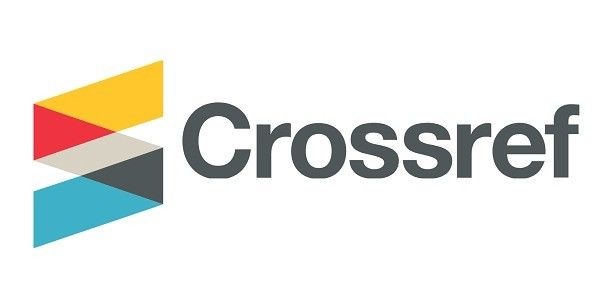Investigating the Impact of Creatine and Vitamin C Supplementation on Insulin Sensitivity and Glycated Hemoglobin Levels in Male Rabbits
DOI:
https://doi.org/10.69667/rmj.25303Keywords:
Ascorbic Acid, Creatine, Insulin Sensitivity, Rabbits.Abstract
Insulin resistance and impaired glucose metabolism are key features of metabolic disorders such as type 2 diabetes mellitus. Natural supplements such as creatine and ascorbic acid have shown potential in improving glycemic control through different biochemical mechanisms. This study aimed to evaluate the effects of creatine supplementation (CrS), ascorbic acid, and their combination on glucose metabolism, insulin sensitivity, and long-term glycemic control in male rabbits. Male rabbits were randomly assigned to four groups: control, creatine-treated, ascorbic acid-treated, and combination-treated. Fasting blood glucose, plasma insulin levels, homeostasis model assessment of insulin resistance (HOMA-IR), and glycated hemoglobin (HbA1c) were measured to assess metabolic status. Treatments were administered over a specific period, and data were analyzed using standard biochemical and statistical methods. Creatine supplementation resulted in a significant hypoglycemic effect and improved insulin sensitivity, with a notable reduction in HOMA-IR (0.85 ± 0.104) compared to the control group (1.12 ± 0.144). Ascorbic acid exerted a milder glucose-lowering effect but contributed to improved antioxidant defenses, potentially protecting pancreatic β-cells from oxidative damage. Plasma insulin levels did not significantly differ among groups (3.27 ± 0.356 to 4.00 ± 0.707 g/dL), suggesting enhanced insulin action rather than increased secretion. HbA1c levels were significantly reduced in all treatment groups, with the combination group achieving the lowest level (3.21 ± 0.43%), followed by creatine (3.8 ± 0.4%) and ascorbic acid (4.6 ± 0.45%). Creatine and ascorbic acid, individually and in combination, effectively improved markers of glucose metabolism in male rabbits. Creatine demonstrated a stronger effect in enhancing insulin sensitivity and lowering glucose, while ascorbic acid played a supportive role by reducing oxidative stress and preserving insulin function. These findings highlight the potential therapeutic value of combining antioxidant and creatine supplementation for managing insulin resistance and hyperglycemia.

Downloads
Published
Issue
Section
How to Cite
Similar Articles
- Fozia Aborayana, Fadila Elghadban, Souad Aboalqasim, Insulin-Dependent Diabetes Mellitus and the Pregnancy Outcomes: A Retrospective Study in the Pediatrics Department of Tripoli University Hospital – Tripoli, Libya , Razi Medical Journal: Volume 1, Issue 2, 2025
- Esam Alsaghair, Taher Alkesa, Wesam Elsaghayer, Validity of Selective Management in Trans pelvic Gunshot Wounds , Razi Medical Journal: Volume 1, Issue 2, 2025
- Nowar Bhari, Hamed Bogdadi, Shamsi Saad, Fagonia glutinosa from Libya as a Potential Source of Lead Compounds: GC-MS Characterization of Metabolites with Antimicrobial and Anticancer Activities , Razi Medical Journal: Volume 1, Issue 3, 2025
- Raja Moman, Nouralhuda Altair, Abdulkarem Tamer, Amnnah Ghalbun, Nagat EL-Magrahi, Antibiosis of Antibiotics, Honey and Probiotics Related Bacteria to Diabetic Foot Infections , Razi Medical Journal: Volume 1, Issue 1, 2025
- Nawfal Hussein, Liwar Ahmed, Halder Abozait, Antimicrobial Resistance in Iraq: A Public Health Emergency in the Shadow of Conflict , Razi Medical Journal: Volume 1, Issue 3, 2025
- Saleh AbuMahara, Hussein Rujbani, Kefah Elmahdi, Nusaiba Elhammal, Mohamed Abdulwaret, NasrEddine Shagloub, Comparison of Blood Loss in Total Knee Replacement Surgery: Intravenous vs. Intra-Articular Tranexamic Acid Administration: A Study Conducted at Al-Massara and Al-Rasheed Clinics in 2024 , Razi Medical Journal: Volume 1, Issue 3, 2025
- Al-Khazraji , Rihab Mansoor, Shahad Alwan, Anfal Abed, Alaa Mahmoud, Safaa Ahmed, Emerging Roles of Asprosin and Nesfatin-1 in Uncontrolled Type 2 Diabetes , Razi Medical Journal: Volume 1, Issue 3, 2025
- Naamat Abid, Ghadda Mohamed, Ghadda Alshumani, Prevalence and Cytological Patterns of Cervical Lesions in Libyan Women: A Five-Year Pap Smear Analysis , Razi Medical Journal: Volume 1, Issue 4, 2025 (October to December)
You may also start an advanced similarity search for this article.








